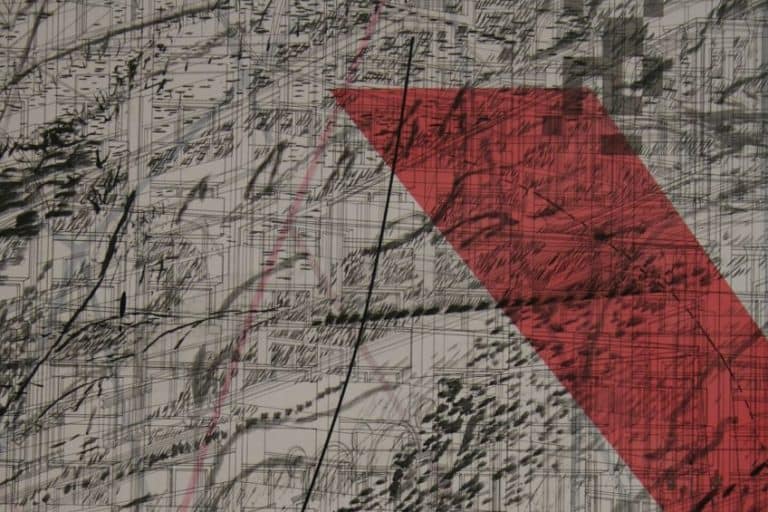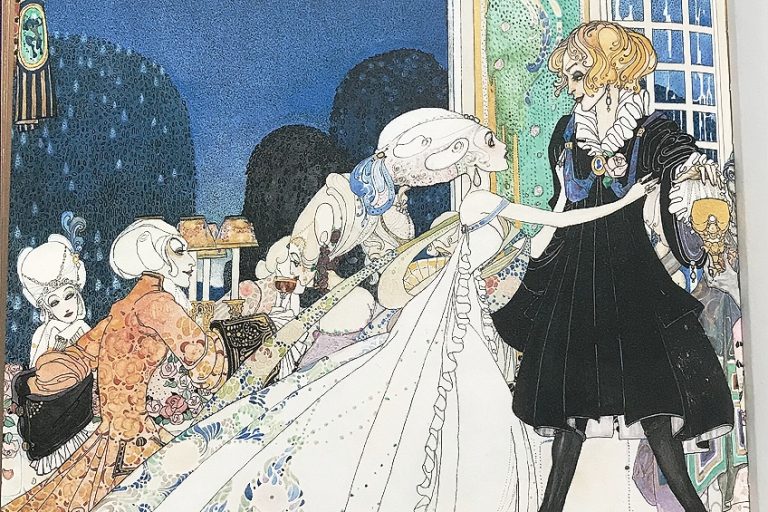Colombian Artists – A Rich Tapestry of South American Art
Colombian artists have made significant contributions to the global art scene, showcasing a rich tapestry of culture, history, and innovation. From vibrant expressions of folk art to thought-provoking contemporary pieces, Colombian artists captivate audiences with their diverse styles and narratives. This article delves into the fascinating world of Colombian art, exploring the works of renowned artists, the cultural influences shaping their creations, and the unique perspectives they bring to the canvas. Join us on a journey through Colombia’s artistic landscape, where tradition meets modernity, and creativity knows no bounds.
Key Takeaways
- Colombian art serves as a rich historical narrative and a mirror to the country’s diverse culture.
- Colombia’s art scene is marked by significant figures and movements that contribute to a global dialogue.
- Contemporary Colombian artists address complex themes reflective of societal challenges and changes.
Historical Context of Colombian Art
Colombian art is a reflection of the country’s rich cultural tapestry, embodying its history, struggles, and its vibrant spirit. Spanning over 3,500 years, the evolution of art in Colombia tells the tale of indigenous traditions, colonial influences, and a ceaseless drive for modernity and expression. This intricate history is woven into the works of its artists, with each piece serving as a testament to the nation’s identity and its place in Latin America.

Through the years, Colombia has produced a plethora of artists who have made significant contributions to the global art scene. Their creations range from traditional practices such as the Quimbaya gold work to expressions of ‘lyrical americanism’ exemplified by painters like Alejandro Obregón. The iconic Fernando Botero, with his voluminous depictions of figures, is perhaps the most universally recognized Colombian artist.
The country’s contemporary artists, including Oscar Murillo and Doris Salcedo, continue to challenge and redefine artistic boundaries, exploring themes of violence, migration, and culture in their diverse practices.
Pre-Columbian and Colonial Influences
Before the Spanish conquest, the territories of present-day Colombia were inhabited by various indigenous cultures known for their sophisticated craftwork and symbolic artistry. The Quimbaya civilization, noted for their intricate gold craftwork, left behind a legacy of exceptional metallurgical skill and artistic expression. These indigenous groups, encompassing a range of Amerindian ethnicities, established a rich artistic tradition that influenced the later colonial arts. Under Spanish rule, the aesthetic of Colombian art was further shaped. Gregorio Vasquez de Arce y Ceballos emerged as one of the most prominent painters of the colonial era in Colombia, heavily influenced by the Spanish Baroque style. His works, often centering around religious themes and Afro-Colombian figures, conveyed the spiritual and cultural fusion that defined the colonial period.

The Influence of Spanish Baroque and Renaissance
The Spanish Baroque influence in Colombia introduced a dramatic and emotive style that left a lasting imprint on the nation’s art. Spanish Baroque’s grandeur and attention to detail reflected in the elaborate ornamentation and vivid depictions of religious narratives and everyday life, resonate in Colombian churches and historic buildings to this day. The grandiosity of the Baroque can be seen in the religious iconography and the prominence of cultural diversity within the visual arts of the time. Similarly, the Renaissance brought a rejuvenation of classical themes and techniques, integrating them into the Colombian artistic vernacular. This period saw the adaptation of Renaissance ideals, merging them with local sensibilities, to create a unique Colombian interpretation of broader European movements.
Colombian artists adopted Renaissance principles of proportion and perspective, marrying them with the local color palette and themes, enriching the country’s artistic heritage.
Notable Colombian Artists to Know
This section highlights a selection of Colombian artists whose contributions to the fields of painting, sculpture, and installation art have been influential both in Colombia and internationally.

Fernando Botero (1932 – 2023)
| Birth | April 19, 1932 |
| Death | September 15, 2023 |
| Place of Birth | Medellín, Colombia |
| Genre of Work | Figurative Art and Boterismo |
Fernando Botero is a Colombian artist renowned for his distinctive style characterized by exaggerated figures and forms. His contributions to Colombian art include bringing international recognition to Colombian artists and influencing the global art scene with his unique approach. Botero’s works often depict scenes of everyday life infused with humor and satire.
An example of this is his famous painting The Mona Lisa, Age 12 which humorously reimagines Leonardo da Vinci’s iconic masterpiece.
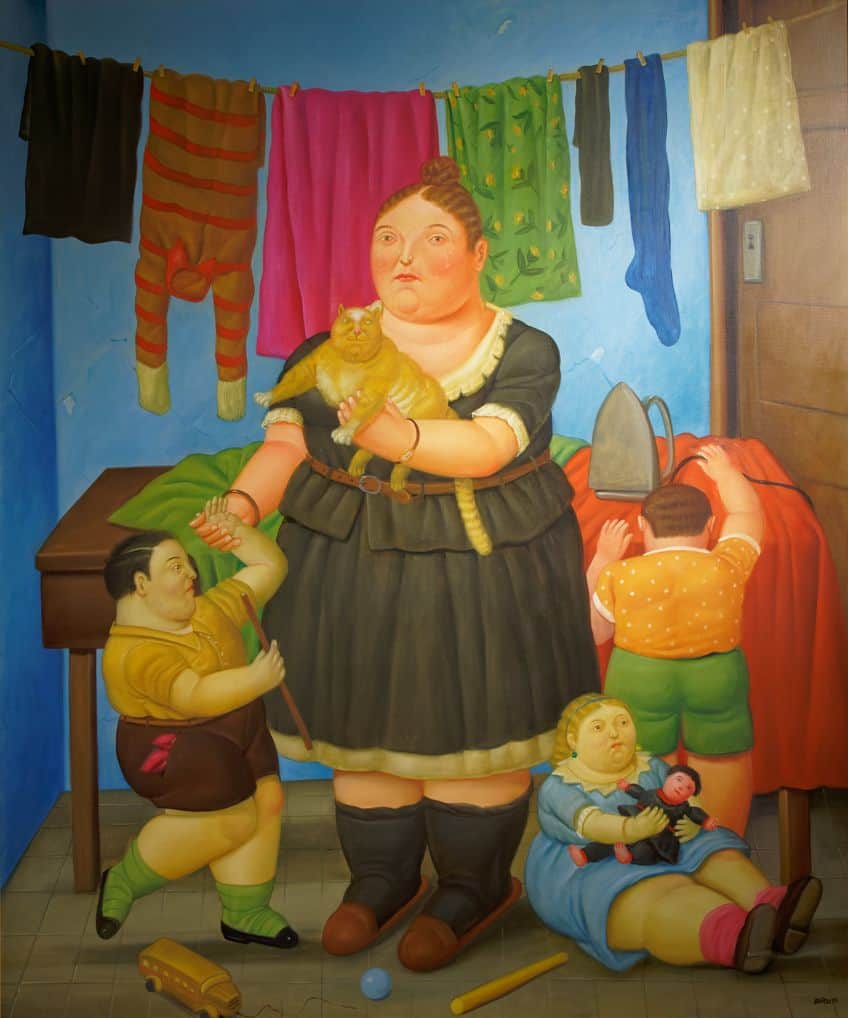
Beatriz González (Born 1932)
| Birth | November 16, 1932 |
| Death | Present |
| Place of Birth | Bucaramanga, Colombia |
| Genre of Work | Pop Art |
Beatriz González is a prominent Colombian artist known for her contributions to pop art and social commentary in Colombian art. Her work often reflects on Colombian history, politics, and popular culture, blending elements of humor and critique.
One of her notable works is The Sisga Reservoir (1965), where she reinterprets an iconic landscape painting to question notions of national identity and progress in Colombia.

Abel Rodríguez (Born 1941)
| Birth | 1941 |
| Death | Present |
| Place of Birth | Colombia |
| Genre of Work | N/A |
Abel Rodríguez is an Indigenous Colombian artist from the Nonuya ethnic group known for his intricate botanical drawings and deep ecological knowledge. His contributions to Colombian art include preserving and sharing Indigenous perspectives on the environment and biodiversity.
Rodríguez’s detailed drawings, such as Untitled (Waterfall) (2000), depict the richness of Colombian flora and fauna while highlighting the interconnectedness of Indigenous cultures with nature.
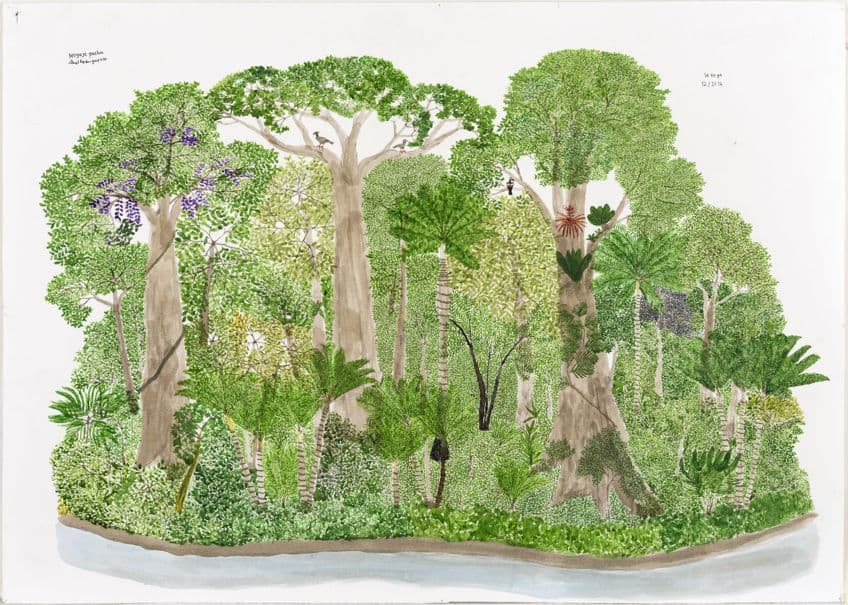
Antonio Caro (1950 – 2021)
| Birth | December 10, 1950 |
| Death | March 29, 2021 |
| Place of Birth | Bogotá, Colombia |
| Genre of Work | Conceptual Art |
Antonio Caro is a Colombian conceptual artist known for his critical exploration of politics, consumer culture, and national identity. His contributions to Colombian art include pioneering conceptual art practices in the country and engaging viewers in thought-provoking dialogues about contemporary issues.
Caro’s iconic work Colombia Coca-Cola is a famous example of his art, where he replaced the word “Coca-Cola” with “Colombia,” highlighting the impact of global brands on cultural identity.
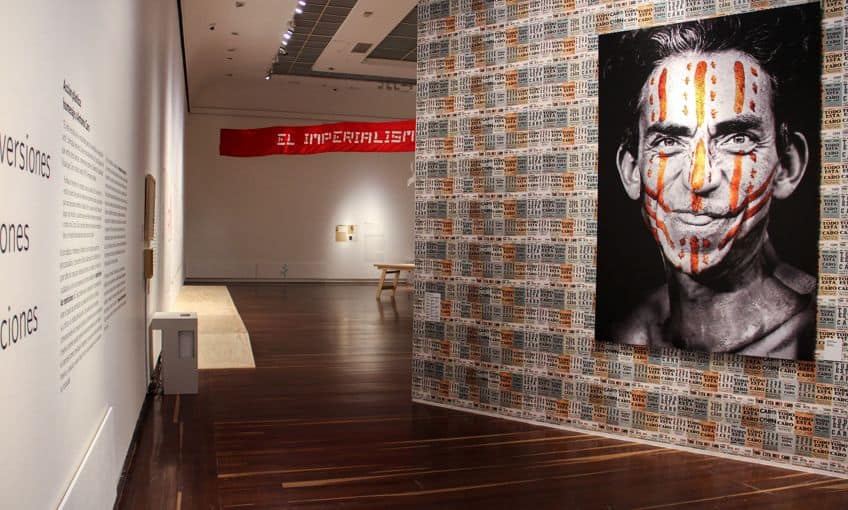
Doris Salcedo (Born 1958)
| Birth | 1958 |
| Death | Present |
| Place of Birth | Bogotá, Colombia |
| Genre of Work | Art as Activism |
Doris Salcedo is a Colombian sculptor and installation artist recognized for her powerful and evocative works addressing themes of violence, memory, and loss. Her contributions to Colombian art include raising awareness about social injustices and giving voice to marginalized communities through her art.
Salcedo’s notable works include Shibboleth, a monumental installation at Tate Modern that symbolizes divisions and fractures in society, created by a long crack in the museum’s floor.

Johanna Calle (Born 1965)
| Birth | 1965 |
| Death | Present |
| Place of Birth | Bogotá, Colombia |
| Genre of Work | Drawing |
Johanna Calle is a Colombian artist recognized for her innovative approach to drawing and printmaking, often incorporating themes of architecture, language, and urban landscapes. Her contributions to Colombian art include pushing the boundaries of traditional mediums and exploring the intersections between art and everyday life.
Calle’s work Lengua y Labio exemplifies her intricate and layered drawing style, where she explores the visual and symbolic potential of lines, textures, and forms.
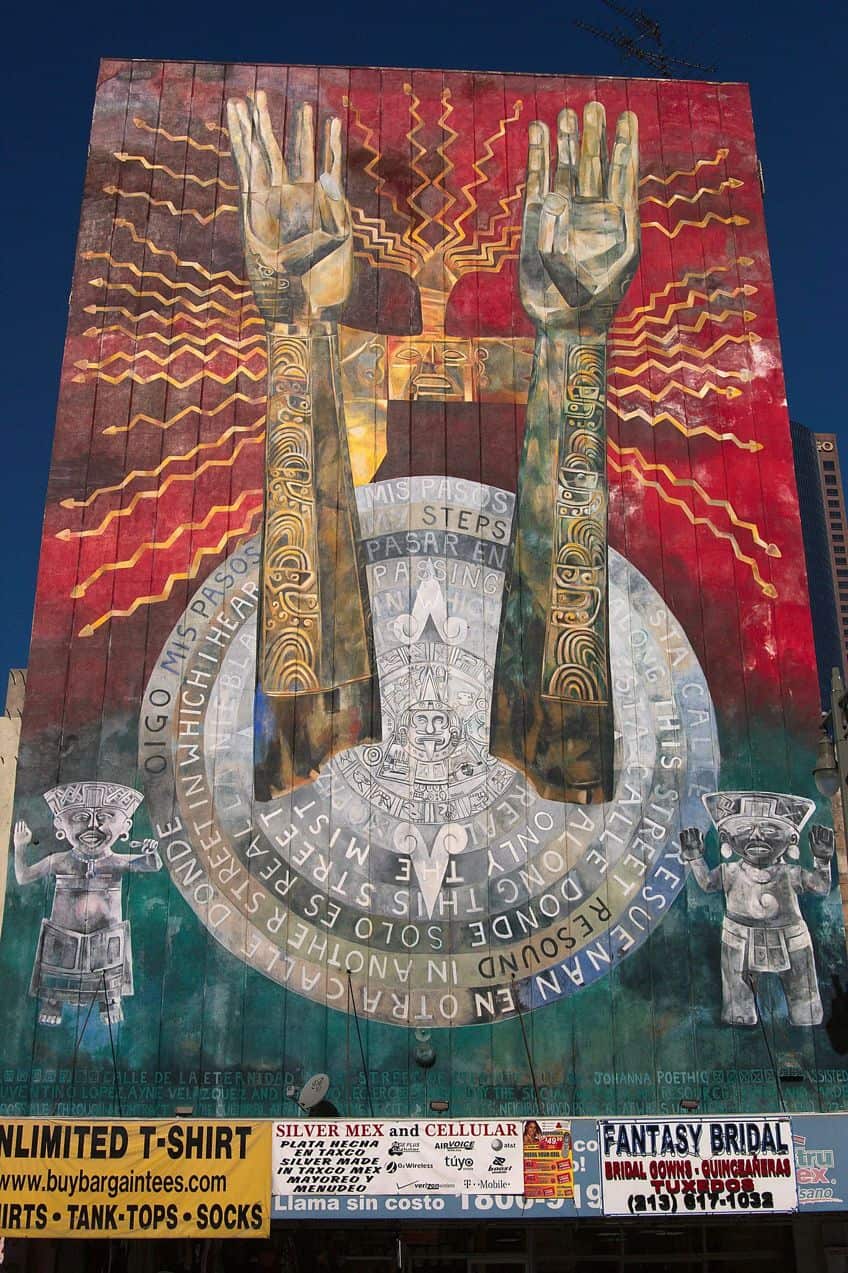
María José Arjona (Born 1973)
| Birth | 1973 |
| Death | Present |
| Place of Birth | Bogotá, Colombia |
| Genre of Work | Performance Art |
María José Arjona is a performance artist from Colombia known for her durational and introspective performances that challenge perceptions of time and space. Her contributions to Colombian art include pushing the boundaries of performance art and exploring the body as a site of transformation and expression.
Arjona’s performance The Beginning of the End (2012) is a compelling example of her immersive and philosophical approach to art.
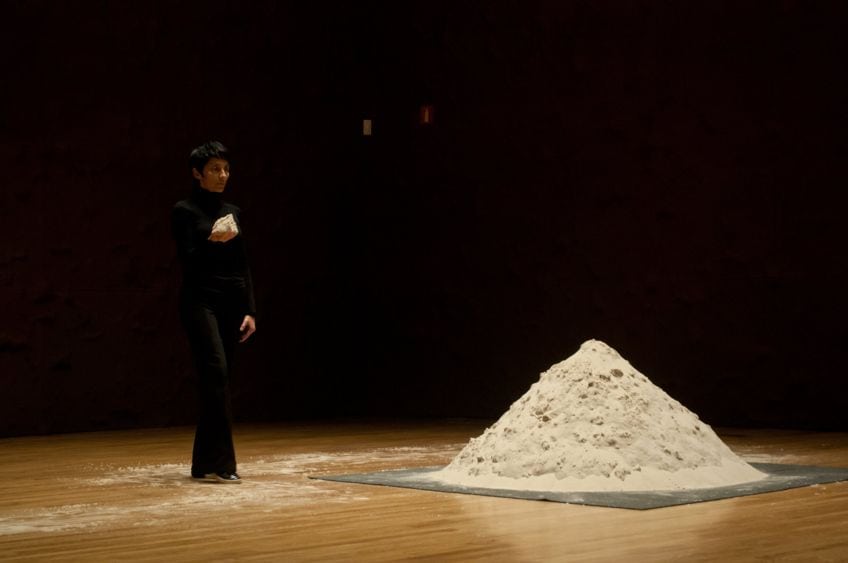
María Berrío (Born 1982)
| Birth | 1982 |
| Death | Present |
| Place of Birth | Bogotá, Colombia |
| Genre of Work | Collage Art |
María Berrío is a Colombian-born, Brooklyn-based artist celebrated for her dreamlike, ethereal mixed-media works. Her art often explores themes of femininity, migration, and mythology, contributing to a contemporary narrative in Colombian art that transcends borders.
Berrío’s work Awakening (2018) is a stunning example of her intricate collage style, incorporating elements of folklore and personal storytelling.
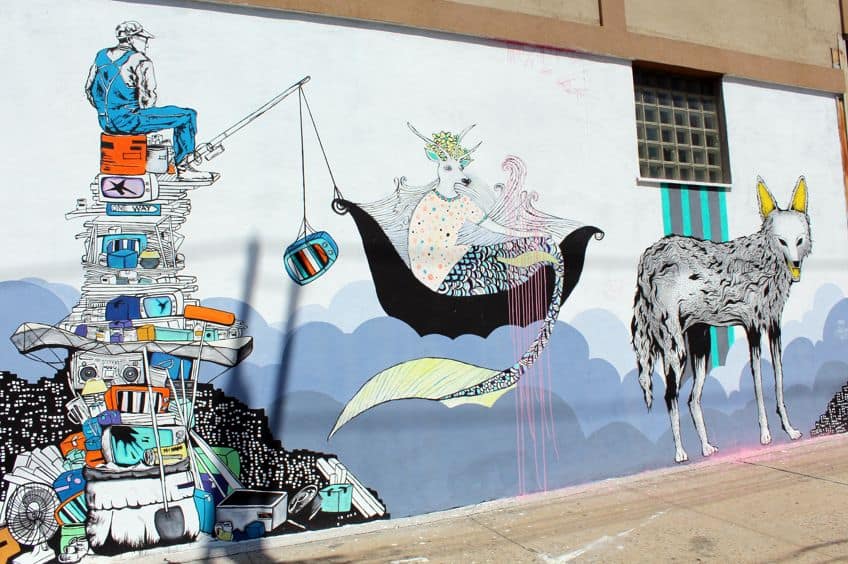
Karen Paulina Biswell (Born 1983)
| Birth | 1983 |
| Death | Present |
| Place of Birth | Colombia |
| Genre of Work | N/A |
Karen Paulina Biswell is a Colombian photographer recognized for her documentary and portrait photography capturing the essence of Colombian culture and identity. Her contributions to Colombian art include capturing intimate moments and stories that celebrate diversity and resilience.
Biswell’s photography series Black Orixás (2018) explores Afro-Colombian spirituality and traditions, showcasing the depth and complexity of cultural heritage in Colombia.
Oscar Murillo (Born 1986)
| Birth | 1986 |
| Death | Present |
| Place of Birth | La Paila, Colombia |
| Genre of Work | Painting |
Oscar Murillo is a contemporary Colombian artist known for his multidisciplinary approach and exploration of social and political themes. His contributions to Colombian art include challenging conventional artistic boundaries and addressing issues of globalization, identity, and cultural exchange. Murillo’s work often incorporates found objects, performance, and installation art.
A famous example is his installation, Frequencies, which explores the interconnectedness of human experience through a dynamic assemblage of materials.
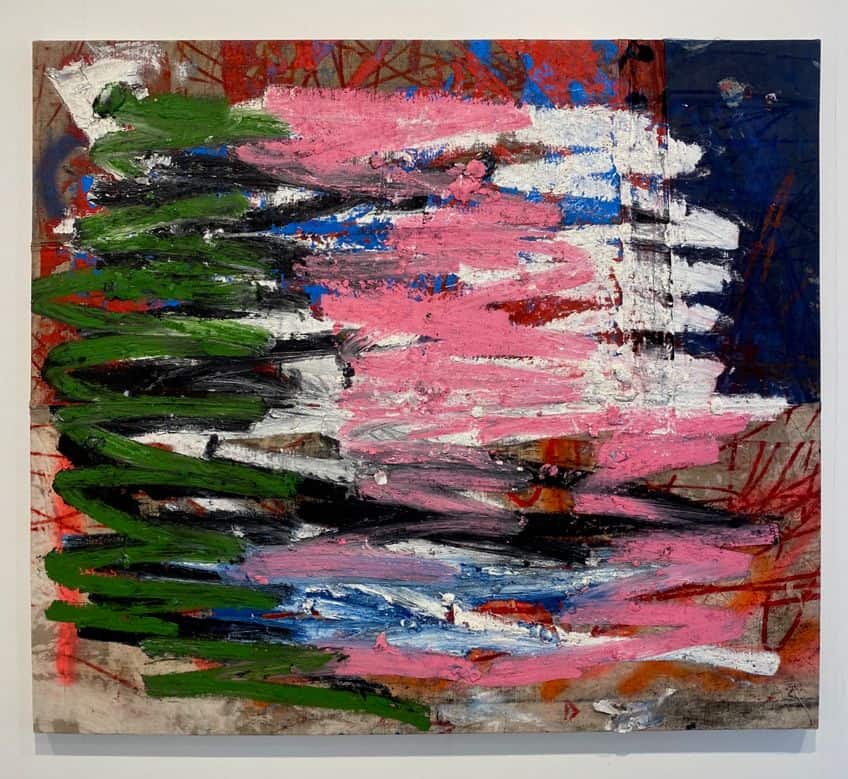
Themes and Styles in Colombian Art
Colombian art is characterized by a vivid exploration of identity and society, the reflection on pain and resilience, and the use of humor and satire to make political and social commentary.

Pain, Resilience, and Mourning
Artistic narratives surrounding pain, violence, loss, and mourning are poignant in the works of Colombian artists, particularly in response to the country’s historical conflicts and societal challenges. Doris Salcedo is well-known for her moving installations and sculptures that embody the themes of grief and healing.
Her work engages with the country’s political past and present, focusing on the weight of collective memory and the resilience of women who have endured loss.
Identity and Society
Colombian artists often grapple with themes of identity, reflecting on the nation’s diverse society and history. Through their art, they explore the integration of indigenous, African, and Spanish influences that contribute to Colombia’s cultural richness. Artists like Fernando Botero have brought global attention to Colombian style with his distinctive approach known as “Boterismo,” which depicts figures in large, exaggerated volume, often addressing social issues and everyday life in Colombia.
Humor and Satire
Colombian art is also distinguished by its use of humor and satire. Artists often employ these devices as tools of political criticism or to offer a different perspective on personal history and societal norms. The whimsical nature of Botero’s “Boterismo,” with its plump and jovial figures, provides a platform for subtle social critique, highlighting issues within the Colombian society with both affectionate humor and sharp insight.

Colombian artists continue to inspire and captivate with their unparalleled creativity and artistic vision. Through a blend of traditional techniques and contemporary perspectives, they showcase the richness and diversity of Colombian culture on a global stage. From vibrant paintings that celebrate the country’s landscapes and traditions to thought-provoking installations that delve into social issues, Colombian artists leave a lasting impact on art enthusiasts worldwide. As we celebrate their contributions, let us also look forward to the future, where Colombian art continues to evolve, innovate, and resonate with audiences across borders.
Frequently Asked Questions
Who Are Some Prominent Figures in Modern Colombian Art?
In recent years, Colombian art has been enriched by the works of artists such as Fernando Botero, known for his voluminous figures, and Oscar Murillo, whose contemporary paintings and installations have gained international attention. Both artists exemplify the innovative spirit of modern Colombian art.
How Has the Colombian Art Culture Evolved Over the Years?
Colombian art culture has undergone significant transformation, moving from traditional forms like sculpture and painting to embrace new mediums such as performance and installation art. Technological advancements and globalization have further influenced Colombian artists, fostering a more diverse and dynamic art scene.
Who Are Influential Colombian Sculptors in Recent Times?
Doris Salcedo is an internationally recognized Colombian sculptor whose evocative installations often address themes of trauma and loss, reflecting Colombia’s social and political history. Another influential sculptor is Édgar Negret, known for his abstract metal sculptures that incorporate vibrant colors and geometric forms. Their contributions continue to shape the landscape of Colombian sculpture.
Isabella studied at the University of Cape Town in South Africa and graduated with a Bachelor of Arts majoring in English Literature & Language and Psychology. Throughout her undergraduate years, she took Art History as an additional subject and absolutely loved it. Building on from her art history knowledge that began in high school, art has always been a particular area of fascination for her. From learning about artworks previously unknown to her, or sharpening her existing understanding of specific works, the ability to continue learning within this interesting sphere excites her greatly.
Her focal points of interest in art history encompass profiling specific artists and art movements, as it is these areas where she is able to really dig deep into the rich narrative of the art world. Additionally, she particularly enjoys exploring the different artistic styles of the 20th century, as well as the important impact that female artists have had on the development of art history.
Learn more about Isabella Meyer and the Art in Context Team.
Cite this Article
Isabella, Meyer, “Colombian Artists – A Rich Tapestry of South American Art.” Art in Context. April 2, 2024. URL: https://artincontext.org/colombian-artists/
Meyer, I. (2024, 2 April). Colombian Artists – A Rich Tapestry of South American Art. Art in Context. https://artincontext.org/colombian-artists/
Meyer, Isabella. “Colombian Artists – A Rich Tapestry of South American Art.” Art in Context, April 2, 2024. https://artincontext.org/colombian-artists/.




